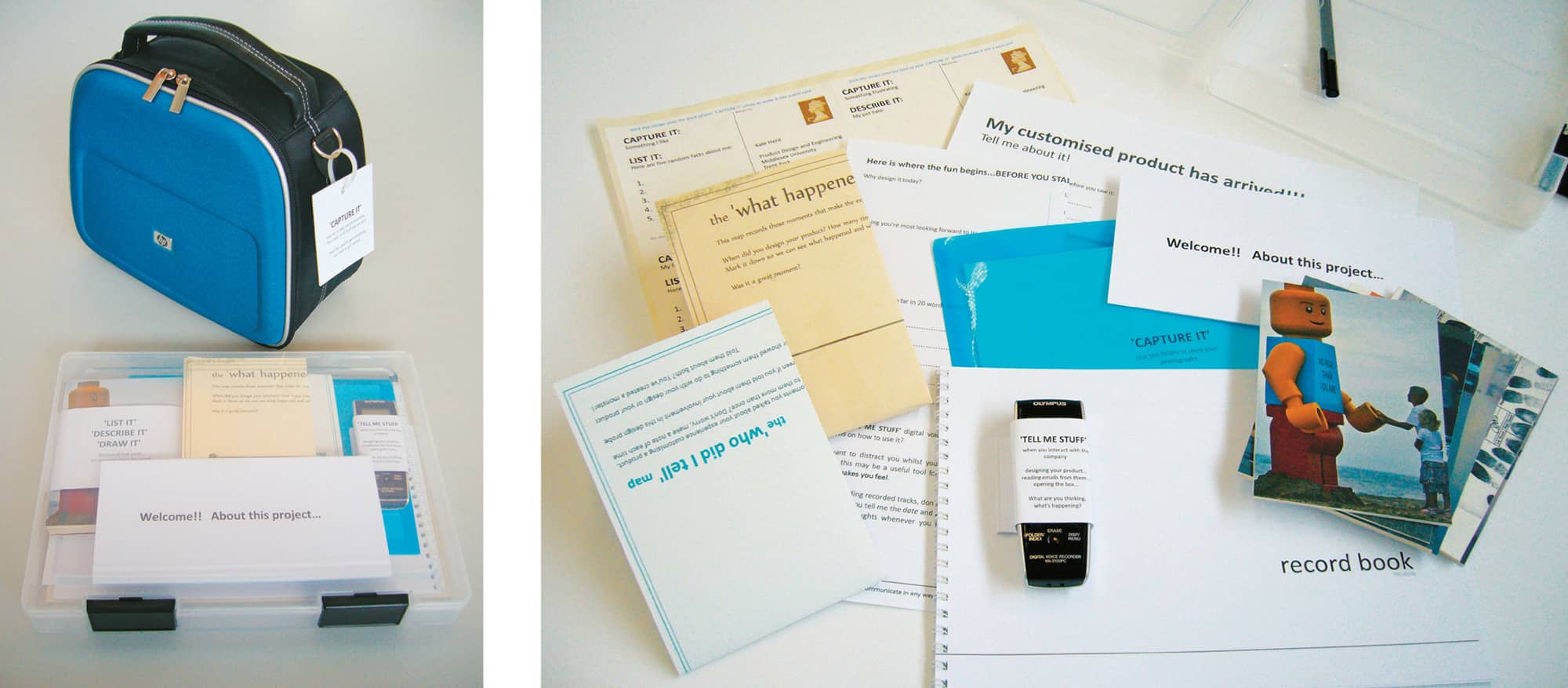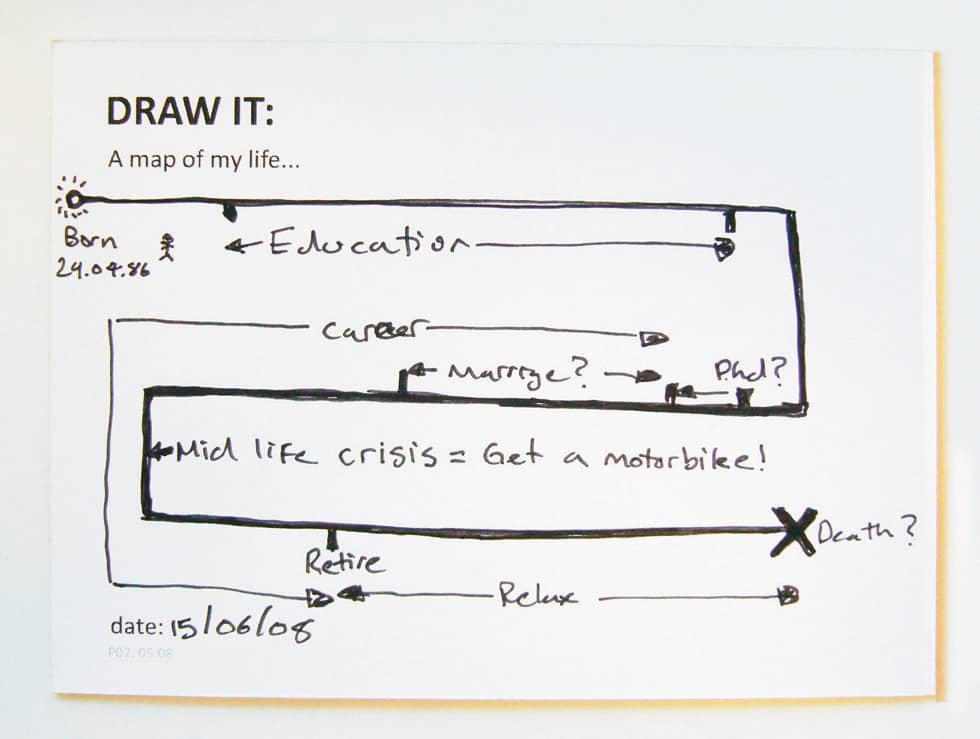RESEARCH METHOD
24 Cultural Probes

Cultural probes are provocative instruments given to participants to inspire new forms of self-understanding and communication about their lives, environments, thoughts, and interactions.1
Cultural probes consist of any number of materials designed to inspire people to thoughtfully consider personal context and circumstance, and respond to the design team in unique, creative ways facilitated by the provocations. Cultural probe studies have used postcards, maps, journals, cameras, recording devices, and various pieces of text and imagery to guide personal responses. Cultural probes use several such artifacts, packaged together for participants. The materials, much like the method itself, are intentionally flexible and open-ended. The creators of cultural probes place the method in the artist-designer realm, with an emphasis on being openly subjective, collecting inspirational data to stimulate design imagination.2
In a study of interaction techniques to increase the presence of the elderly in three European communities, Bill Gaver et al. created cultural probe kits to gain impressionistic views of participant cultures, preferences, beliefs, and desires.3 Postcards contained obscure images and were preaddressed for return to the design team, posing open questions about the cultural environment, life, and technology. Several maps printed on various papers asked the elderly to mark zones for meeting others, being alone, dreaming, and going somewhere they could not. Disposable cameras were provided to take images of both assigned and self-selected things, and to use these in telling a story in a small album included in the kit. Finally, a media diary asked about technology interactions and communication.
As an exploratory research method, cultural probes are not intended to be formally analyzed, but rather to serve as inspirational pieces identifying key patterns and themes that might emerge from a participant group or culture. They serve to begin a conversation about possibilities that might exist by design, in tandem with other informative research methods such as observations, site visits, interviews, and secondary sources. In the Gaver et al. study, the results of the returned kits were used as one element to inspire proposals for future possibilities and design conversations, based on the character of each local culture.4
Cultural probes are specifically casual and informal, yet thoughtful in their aesthetic craft, message, and delivery, created to inspire delight and respect, response and return. The materials created for probe kits should be varied and imaginative, designed to elicit responses that are relevant to the particular design inquiry. When done well, cultural probes will gain respectable response rates comparable to or exceeding traditional methods, with investment in the exercise by enthusiastic participants, and rich information to inspire great design.
1. The seminal research on cultural probes is by Gaver et al., created for the “Presence Project,” examining technology and the increased presence of the elderly in their local communities in Norway, the Netherlands, and Italy. See “Cultural Probes” by Bill Gaver, Tony Dunne and Elena Pacenti, in Interactions, January-February 1999, pp. 21–29.
2. See note 1 above.
3. See note 1 above.
4. See note 1 above.
Further Reading
W. Gaver, A. Boucher, S. Pennington, and B. Walker. “Cultural Probes and the Value of Uncertainty” in Interactions, Vol. XI.5 (2004): 53–56.
Herd, Kate, A. Bardill, and M. Karamanoglu. “The Co-design Experience: Conceptual Models and Design Tools for Mass Customization” in Handbook of Research in Mass Customization and Personalization, vol 1. Singapore: World Scientific Press, 2010.
Herd, Kate, A. Bardill, and M. Karamanoglu. “X-ray Specs, Stickers and Colouring In: Seeing Beyond the Configurator using Design Probes.” Proceedings of 2009 World Conference on Mass Customization & Personalization, 2009.
Herd, Kate, A. Bardill, and M. Karamanoglu. “Development of a Design Probe to Reveal Customer Touch Points in the Sale of Mass Customised Products.” Design Principles and Practice 3, no. 3 (2009): 193–208.
Mattelmäki, Tuuli. Design Probes. Publication Series of the University of Art and Design Helsinki, 2006, http://www.uiah.fi/publications



A cultural probe kit for tracking the experience of customers as they move from being consumer to co-designer using mass customizable products. Design probes support empathic understanding through information gathering over a prolonged period, where the researcher cannot be present. The probe kits in this study collected user reflections on experiences through their personal stories, told using digital voice recorders, cameras, postcards, diaries, and stickers.
Courtesy of Kate Herd
